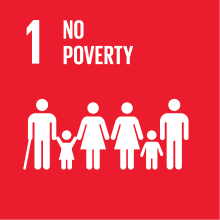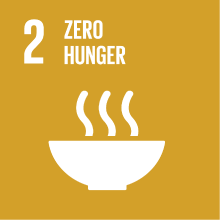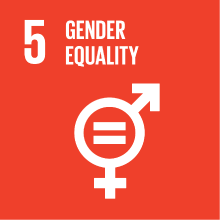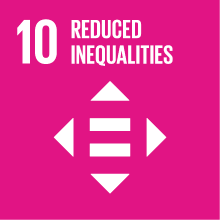INDIAN MODERN AND CONTEMPORARY ART
- Academic year
- 2024/2025 Syllabus of previous years
- Official course title
- ARTE MODERNA E CONTEMPORANEA DEL SUBCONTINENTE INDIANO
- Course code
- LM2570 (AF:444487 AR:288002)
- Teaching language
- English
- Modality
- On campus classes
- ECTS credits
- 6
- Degree level
- Master's Degree Programme (DM270)
- Academic Discipline
- L-OR/11
- Period
- 2nd Semester
- Course year
- 2
- Moodle
- Go to Moodle page
Contribution of the course to the overall degree programme goals
This focus seeks, on the one hand, to build and consolidate the knowledge of those attending the course on modern and contemporary South Asia by encouraging comparisons and connections between regional productions and the broader global context. On the other hand, it aims to illustrate how the study of visual culture can serve as a critical tool in analysing modern and contemporary South Asian and Himalayan historical, political, religious, and social phenomena.
Expected learning outcomes
Students will be able to interpret and describe artistic trends and dynamics from the second half of the 19th century to the early 21st century, along with the underlying ideas and concepts, and to analyse and contextualise artworks within their historical and cultural frameworks. Additionally, students will explore the role of museum collections of modern and contemporary art in promoting artists and movements and will critically reflect on the political, social, and religious implications of the development of movements and trends, as well as the exhibition choices made by public museums and private galleries.
The importance of visual production will be examined and employed as an indispensable tool for studying societies and historical periods. The course will deepen the topics and themes addressed by relating them to knowledge acquired in previous academic pursuits and other educational activities, while also critically engaging with theories proposed by art historians and scholars.
Pre-requirements
Contents
Subsequently, the course will analyse the emergence and development of contemporary secular art, detached from traditional and religious frameworks. The work of internationally recognised artists will be examined in depth, including the socio-cultural aspects of their success and the dissemination of their works in international galleries and museums.
Among the themes to be addressed during the course are the decline of “Oriental art,” the rise of female voices, issues related to the musealisation of modern and contemporary Himalayan art, the conservation and restoration of artworks, and challenges surrounding ethical practices in exhibition and conservation. The course will also delve into the phenomenon of “forgeries,” investigating the concepts of “authenticity,” “originality,” and “replication.”
Referral texts
1. One Book of Your Choice from the Following Selection:
- Furger, Alex R., The gilded Buddha, Basel Frankfurt 2017 (excerpts);
- Jackson, David and J. Jackson, Tibetan Thangka Painting. Methods & Materials, Boston 1984;
- Weingeist Rachel, Rebecca Bloom (eds.), Tradition Transformed Tibetan Artists Respond, Rubin Museum of Art, New York, 2010 [Selecting this book requires reading two extra articles from the lists below, along with the mandatory ones].
2. Mandatory Articles. All Four Must Be Read:
- Bagdel, Dina. “Packaging the Naked Buddhas. Authenticity, Innovation, and Cultural Imaginings in the Tourist Art of Nepal”. Ateliers d'anthropologie. 43,2016.
- Bellini, Chiara. “Tradition or Innovation? ‘Orientation’ in Tibetan Traditional and Modern Art” in R. Freschi (ed.) Past and Present of Tibetan Painting, 2010, Milano.
- Bentor, Yael. “Tibetan Tourist Thangkas in the Kathmandu Valley”, Annals of Tourism Research, Vol. 20, 1993
- Tythacott, Louise and Chiara Bellini. “Deity and Display: Meanings, Transformations, and
Exhibitions of Tibetan Buddhist Objects”. Religions 2020,11,106.
3. One Article of Your Choice from the Following Selection:
- Clark, Imogen. “Exhibiting the Exotic, Simulating the Sacred: Tibetan Shrines at British and American Museums”, Ateliers d’anthropologie, 43/2016.
- Jackson, David and J. Jackson. “A Survey of Tibetan Pigments”, Kailash, Vol. 4, No. 3, 1976.
- Reedy, Chandra L., “The Opening of Consecrated Tibetan Bronzes with Interior Contents: Scholarly, Conservation, and Ethical Considerations”, JAIC, Vol. 30, No. 1, Spring 1991.
- Reedy, Chandra L., “Religious and Ethical Issues in the Study and Conservation of Tibetan Sculpture”, JAIC, Vol. 31, No. 1, Albuquerque, June 3-8, 1991, Spring 1992.
- Slusser, Mary Shepherd, Nutan Sharma and James A. Giambrone. “Metamorphosis: Sheet Metal to Sacred Image in Nepal”, Artibus Asiae, 1999, Vol. 58, No. 3/4, 1999.
4. One Additional Article of Your Choice from the Following Selection:
- Bangdel, Dina. “Contemporary Nepali Art. Narratives of Modernity and Visuality”, in D. Shimkhada (ed. by). Nepal, Nostalgia and Modernity. Marg, 2011.
- Bellini, Chiara. “Tradition and Innovation. Western Influences in the artistic production of the Nepali Painter Mukti Singh Thapa”, in H. Fujita (a cura di), Art and Aesthetics in the Age of Globalization, Bologna, Osaka University: 2012.
- Burnett, Katharine P. “Tibetan Buddhist Art in a Globalized World of Illusion: The Contemporary Art of Ang Tsherin Sherpa”, Modern China Studies, Vol. 18, No. 2, 2011.
- Harris, Clare. “The Buddha Goes Global: Some Thoughts Towards a Transnational Art History”, Art History, Vol. 29, No. 4, 2006.
- Jackson, David. “Lama Yeshe Jamyang of Nyurla, Ladakh: the Last Painter of the ’Bri gung Tradition”, The Tibet Journal, Vol. 27, No. 1/2, S/S 2002.
- Lo Bue, Erberto. “Tshe ring dngos grub, a Ladaki Painter and Astrologer”, The Tibet Journal, Vol. XLII, No. 1, S/S 2017.
- Lo Bue, Erberto. “Lives and Works of Traditional Buddhist Artists in 20th Century Ladakh. A Preliminary Account”, in John Bray (ed.), Ladakhi Histories, Boston: Brill 2005.
- Lo Bue, Erberto. “Newar Sculptors and Tibetan Patrons in the 20th Century”, The Tibet Journal
Vol. 27, No. 3/4, A/W 2002.
- Magnatta, Sarah. “Disrupted Bodies and Regeneration”, Tales of Muted Spirits, Dispersed Threads, Twisted Shangri-La, 2023.
Additional Readings. Optional but Recommended for Further Exploration:
C. Bellini, Nel Paese delle Nevi. Storia culturale del Tibet dal VII al XXI secolo, Einaudi, Milano 2015.
A. Michaels, Nepal. A History from the Earliest Times to the Present, Oxford U.P., New York 2024.
Availability: Required articles and book excerpts can be accessed on Moodle.
Assessment methods
Type of exam
Teaching methods
Further information
2030 Agenda for Sustainable Development Goals
This subject deals with topics related to the macro-area "Poverty and inequalities" and contributes to the achievement of one or more goals of U. N. Agenda for Sustainable Development




